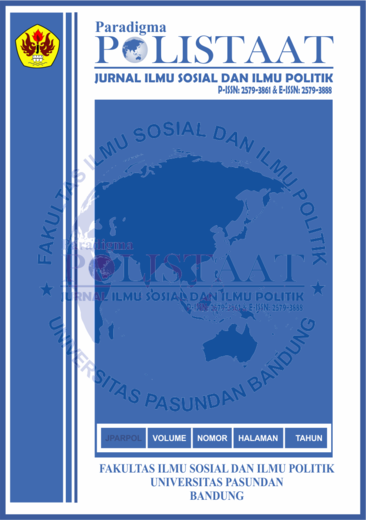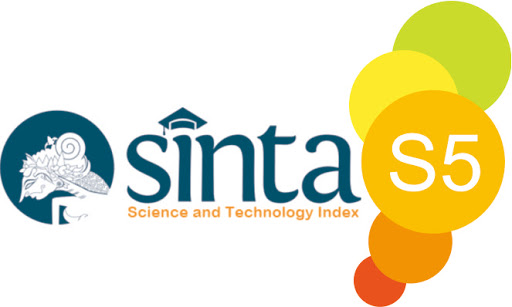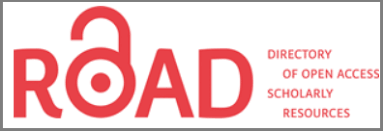Peran APEC dalam Mengatasi Kemiskinan Masyarakat Pesisir di Kawasan Asia-Pasifik melalui Implementasi Blue Economy
Keywords:
APEC, Asia-Pacific, Blue Economy, Goal 14 SDGs, Coastal CommunityAbstract
Kawasan Asia-Pasifik kini telah menjadi poros perekonomian dunia yang berorientasi pada
potensi maritim. Namun ironisnya, sebagian besar masyarakat pesisir di wilayah Asia-Pasifik
justru hidup dalam kubangan kemiskinan. Pengelolaan sumber daya laut yang salah menjadi
salah satu faktor penyebab utama. Guna mengatasi permasalahan tersebut, blue economy
disinyalir menjadi pendekatan baru yang bertujuan untuk menciptakan perekonomian maritim
yang lebih inklusif dan berkelanjutan. Asia Pacific Economic Cooperation (APEC) sebagai forum kerja sama regional di Asia-Pasifik memiliki peran penting dalam memastikan
pelaksanaan blue economy di kawasan. Penelitian ini akan mengkaji bagaimana pengaruh blue
economy terhadap masyarakat pesisir di kawasan Asia-Pasifik serta bagaimana peran APEC
dalam mendorong pengimplementasian blue economy di Asia-Pasifik. Metode yang digunakan
dalam penelitian ini adalah metode penelitian kualitatif, penelitian kualitatif adalah sebuah
metode penelitian yang digunakan untuk melihat realitas ganda (majemuk), hasil konstruksi
dalam pandangan holistik. Berdasarkan hasil penelitian, ditemukan bahwa APEC memiliki
peran konkret dalam mewujudkan model blue economy di kawasan Asia-Pasifik. Penerapan
blue economy juga ditinjau berpengaruh signifikan terhadap perbaikan ekonomi dan kualitas
hidup masyarakat pesisir Asia-Pasifik.
Downloads
References
Agnew, D. J., Pearce, J., Pramod, G., Peatman, T., Watson, R., Beddington, J. R., & Pitcher, T. J. (2009). Estimating the worldwide extent of illegal fishing. PLoS ONE, 4(2). https://doi.org/10.1371/journal.pone.0004570
Ananta, A., Bauer, A., & Thant, M. (2013). The Environments of the Poor in Southeast Asia, East Asia and the Pacific.
APEC. (2014, August 28). Xiamen Declaration [Fourth APEC Ocean-Related Ministerial Meeting-AOMM4 Towards New Partnership through Ocean Cooperation in the Asia Pacific Region]. Xiamen, China.
APEC. (2021, September). Ocean and Fisheries | APEC. Asia-Pacific Economic Cooperation. Retrieved May 29, 2023, from https://www.apec.org/groups/som-steering-committee-on-economic-and-technical-cooperation/working-groups/ocean-and-fisheries
APEC. (2023, May 18). APEC Launches Green Maritime Initiative to Foster Collaboration and Address Climate Change | APEC. Asia-Pacific Economic Cooperation. Retrieved May 29, 2023, from https://www.apec.org/press/news-releases/2023/apec-launches-green-maritime-initiatives-to-foster-collaboration-and-address-climate-change
APEC OFWG. (2017, August). APEC Marine Sustainable Development Report. SOM Steering Committee on Economic and Technical Cooperation (SCE), Ocean and Fisheries Working Group (OFWG).
Barkenbus, J. (n.d.). East-West Center APEC and the Environment: Civil Society in an Age of Globalization.
Chen, I. J. (2022, March). A CRITICAL APPRAISAL OF INITIATIVES OF ASIA-PACIFIC ECONOMIC COOPERATION (APEC) FOR THE BLUE ECONOMY: DEADLOCKS AND ANY POSSIBLE WAY OUT? Asian Journal of WTO & International Health Law and Policy, 17(1), 85-113.
Creswell, J. W. (2013). Qualitative Inquiry And Research Design: Choosing Among Five Approaches (3rd ed.). Sage Publications Inc.
Denzin, N. K., & Lincoln, Y. S. (2011). Introduction: The discipline and practice of qualitative research. The Sage handbook of qualitative research (4th ed., pp. 1–19). Thousand Oaks, CA: Sage.
Hettne, B., & Soderbaum, F. (2000). Theorising the Rise of Regionness. New Political Economy, 5(3), 457–472. https://doi.org/10.1080/713687778
Silooy, M. (2017). ANALISIS FAKTOR-FAKTOR YANG MEMPENGARUHI TINGKAT KEMISKINAN ABSOLUT MASYARAKAT PESISIR ( NELAYAN ) DI DESA SEILALE KECAMATAN NUSANIWE. Cita Ekonomika, Jurnal Ekonomi, XI(1).
Singh, S. K. (2019, February). APEC Policy Support Unit POLICY BRIEF No. 26. In Recognising Sustainability in Tourism. APEC Secretariat, APEC Policy Support Unit.
FAO STATISTICS. (n.d.). www.fao.org/fishery/static/Yearbook/YB2019_USBcard/index.htm
Icsf. (n.d.). The following is the input of ICSF to the Compilation Document of the United Nations Conference on Sustainable Development (Rio+20).
Juneja, M., De Souza, C., Giriyan, A. L., & Ganeshan, S. (2021). Contextualizing Blue Economy in Asia-Pacific Region Exploring Pathways for a Regional Cooperation Framework Policy Brief Contextualizing Blue Economy in Asia-Pacific Region-Exploring Pathways for a Regional Cooperation Framework.
Mansfield, E. D., & Reinhardt, E. (2003). Multilateral determinants of regionalism: The effects of GATT/WTO on the formation of preferential trading arrangements. International organization, 57(4), 829-862.
Maas, S.H. (2022). Rakyat Miskin Ekstrem Pesisir Indonesia dan Asia Tenggara: Butuh Perbaikan Regulasi Skala Nasional. Media Jambi
Meere, Frank., Lack, Mary., Asia Pacific Economic Cooperation (Organization), & Asia Pacific Economic Cooperation (Organization). Fisheries Working Group. (2008). Assessment of impacts of illegal, unreported and unregulated (IUU) fishing in the Asia-Pacific. Asia-Pacific Economic Cooperation Secretariat.
Nurfauzi, N., & Mansur, U. (2022). IMPLEMENTASI KONSEP BLUE ECONOMY DALAM PEMBANGUNAN MASYARAKAT PESISIR DI MASA NEW NORMAL. Seminar Nasional Ekonomi dan Akuntansi (Vol. 1, Issue 1).
Pauli, G. (2010). The Blue Economy: 10 Years, 100 Innovations, 100 Million Jobs. Paradigm Publications.
Pradana, M. A. (2021). DAMPAK BLUE ECONOMY TERHADAP EKOSISTEM DI ASIA PASIFIK. Jurnal Asia Pacific Studies, 5(2), 164–174. https://doi.org/10.33541/japs.v5i2.2542
Söderbaum, F., & Hettne, B. (1999). Towards Global Social Theory. Journal of International Relations and Development, 2(4), 358–368. https://www.researchgate.net/publication/259744727
The Blue Economy. (n.d.).
United Nations Development Programme (2016). The Blue Economy Handbook: A Guide to the Oceans and Coastal Resources of Asia-Pacific.
Yin, R. K. (2018). Case Study Research and Applications (Design and Methods) (Sixth). Sage Publications Inc.
Yin, R. K. (2016). Qualitative Research from Start to Finish (Second). The Guilford Press.
Downloads
Published
Issue
Section
License

Paradikma Polistaat: Jurnal Ilmu Sosial dan Ilmu politik is licensed under a Creative Commons Attribution-ShareAlike 4.0 International License
In order to be accepted and published by Paradigma POLISTAAT: Jurnal Ilmu Sosial dan Ilmu politik, author(s) submitting the article manuscript should complete all the review stages. By submitting the manuscript the author(s) agreed to these following terms:
1. The copyright of received articles shall be assigned to Paradigma POLISTAAT: Jurnal Ilmu Sosial dan Ilmu politikas the publisher of the journal. The intended copyright includes the right to publish articles in various forms (including reprints). Paradigma POLISTAAT: Jurnal Ilmu Sosial dan Ilmu politikmaintain the publishing rights to the published articles.
2. Authors are permitted to disseminate published article by sharing the link/DOI of the article at Paradigma POLISTAAT: Jurnal Ilmu Sosial dan Ilmu politik. authors are allowed to use their articles for any legal purposes deemed necessary without written permission fromParadigma POLISTAAT: Jurnal Ilmu Sosial dan Ilmu politik with an acknowledgement of initial publication to this journal.
3. Users/public use of this website will be licensed to CC BY-SA (Attribution & ShareAlike).















